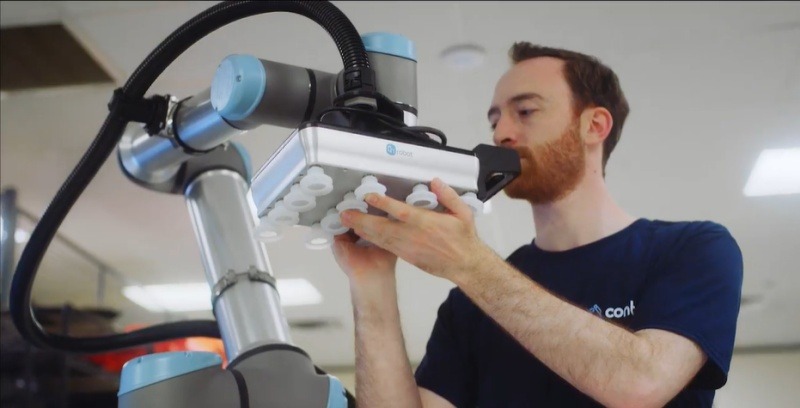[해외 DS] 10년의 연구, 휴먼 브레인 프로젝트의 명과 암 (2)
일관된 지적은 과제 파편화 홀로 빛나는 조각, EBRAINS 주요 유산 계승하고 발전 해야
[해외 DS] 10년의 연구, 휴먼 브레인 프로젝트의 명과 암 (1)에서 이어집니다.

조각난 그림
HBP를 관통하는 공통적인 문제점으로 파편화를 꼽는다. 프레그낙 교수는 “매우 유용한 응용 프로그램들이 나왔지만, 확장성을 고려한 통합 솔루션은 보이지 않고, 큰 문제를 해결하지도 못했습니다.”라고 지적했다.
지난 3년 동안 HBP는 하위 프로젝트들이 개발한 서로 다른 기술을 EBRAINS로 통합하여 파편화되는 것을 극복하려고 노력해 왔다. 6개 플랫폼에 걸친 과제들은 호환할 수 있는 도구와 데이터 표준을 개발하기 시작했으며, 일부 그룹은 특정 과제를 중심으로 재조직되었다. “하지만 아직 해야 할 일이 많이 남아 있습니다.”라고 지르사 박사가 말했다. “뉴로로보틱스는 여전히 임상 중심의 분야와 전혀 연결되지 않았습니다.”
일부 연구자들은 HBP의 단편적인 과학적 성과가 집중력 부족에서 비롯된 것이라고 비판했다. 항의 서한에 서명한 후 HBP를 떠난 독일 괴팅겐 대학의 이론 신경 물리학자 프레드 볼프(Fred Wolf)는 “10년 이상 지속되는 프로젝트인 만큼 이론적 진전이 이뤄지길 기대했죠.”라고 아쉬움을 비쳤다. 프로젝트에 참여하지 않았던 파리의 통합 신경과학 및 인지 센터의 신경과학자 데이비드 한셀(David Hansel)은 HBP가 우선순위를 정하지 않고 협업이 원활하지 못했기 때문에 그 규모를 활용하지 못했고, 공동의 목표를 위해 신경과학 커뮤니티를 단결시키는 데 실패했다고 평가했다. “이 프로젝트에는 해결해야 할 최우선적이고 합리적인 목록이 없었습니다. 구체적이지 못한 포괄적인 ‘목표’만 있었습니다.”
메릴랜드주 베데스다에 있는 미국 국립보건원의 BRAIN 이니셔티브 연구 책임자인 존 응가이(John Ngai)는 가설 중심 과학보다는 자료수집에 중점을 두는 것이 안전했을 거로 생각했다. “과학이 항상 달착륙과 같은 대단한 성과를 내야 하는 것은 아닙니다. 특히 목표를 향한 과정이 불확실한 경우에는 더욱 그렇습니다.”
10년의 유산
9월 말, HBP는 기금 지급을 중단할 예정이다. 이 프로젝트에서 나온 일부 과제는 이미 연구비를 확보하여 연구를 계속하고 있지만, HBP에 부분적으로 또는 전체적으로 참여했던 많은 연구자의 미래는 불확실하다.
하지만 아문츠 박사와 다른 연구자들은 HBP의 연구와 EBRAINS 플랫폼이 향후 수년간 유럽 신경과학 연구의 토대가 될 것이라 희망했다. 2018년 1월 HBP는 EBRAINS를 위한 대화형 슈퍼컴퓨팅 도구와 데이터 저장 서비스를 개발하기 위해 5,000만 유로를 지원받았다.
연구원들은 이미 이 플랫폼을 사용하여 뇌가 자극에 어떻게 반응하는지 알아보고 뇌를 모방하는 로봇을 개발하는 등 다양한 연구를 진행하고 있다. 응가이 이사는 HBP가 EBRAINS로 피봇한 덕분에 귀중한 도구가 만들어졌다고 강조했다. 다른 유사 플랫폼도 존재하지만 EBRAINS가 제공하는 규모와 서비스에는 미치지 못한다.
지난 3월, 유럽집행위원회는 EBRAINS를 계속 운영하기 위한 3,800만 유로의 지원금 신청을 거절했지만, HBP와의 협상 끝에 6월에 같은 신청을 재개하여 팀에게 다시 한번 기회를 제공했다. 지원금을 받지 못하면 앞으로 민간 자금과 개별 EU 국가의 재정 지원에 의존해야 한다.
한편, 유럽집행위원회는 본격적인 심의 준비에 착수했다. HBP의 최종 검토는 11월에 시작되어 2024년 1월에 발표될 예정이다. “세계 신경과학계에서 AI의 겨울과 같은 시간을 보내고 싶지 않다면, 우리는 신경과학을 존경받을 만한 수준으로 만들어야 합니다. 이러한 유형의 대규모 프로젝트가 좋은지 아닌지 엄중하게 평가할 필요가 있습니다.”라고 프레그낙 교수가 언급했다.
하지만 HBP의 종료가 유럽 신경과학의 종말은 아니라고 EBRAINS의 최고 경영자이자 HBP의 사무총장인 파베우 슈비에보다(Paweł Świeboda)는 힘주어 말했다. 유럽위원회와 회원국은 개인화된 뇌 모델을 사용하여 신약 개발과 뇌 질환 치료법 개선에 박차를 가할 계획이다.
그러나 연구자들은 향후 프로젝트는 HBP의 고질적인 문제들을 피해야 할 것이라고 조언했다. “우리는 처음에 그랬던 것처럼 또 다른 HBP를 하고 싶지 않습니다.”라고 오리어리 교수가 토로했다. “메가 프로젝트뿐만 아니라 우선순위가 바로 선 소규모 연구도 지원해야 합니다. 그럼에도 불구하고 이 대규모 프로젝트는 몇 가지 공통된 목표에 집중하는 과학자 커뮤니티를 만들었다고 그는 덧붙였다. “이는 계속 지속될 유산입니다.”
NOT THE WHOLE PICTURE
The project’s organizers and critics cite a common thread running through the HBP: fragmentation. This is a long-standing issue in neuroscience research. “I see very astute applications, but you don’t see multiscale integration, and you don’t see the big problems being tackled,” says Frégnac.
In its last three years, the HBP has tried to overcome the fragmentation of its interdisciplinary sub-projects by knitting together their technologies into EBRAINS. Initiatives across the HBP’s six platforms started to develop compatible tools and shared data standards, and some groups were re-organized to centre on particular scientific challenges rather than disciplines. “But there is a lot of work to be done,” says Jirsa. “Neurorobotics [still] has zero link to the more clinically driven group.”
For some researchers, the fragmented scientific outcomes of the HBP stem from a lack of focus. “A project that lasts over ten years, I would expect it to produce a conceptual breakthrough,” says Fred Wolf, a theoretical neurophysicist at the University of Göttingen, Germany, who left the HBP after signing the open letter. But that wasn’t the case for the HBP, he says.
David Hansel, a neuroscientist at the Integrative Neuroscience and Cognition Center in Paris, who wasn’t part of the project, says the HBP’s lack of prioritization and limited collaboration meant that it failed to capitalize on its size and to really unite the neuroscience community behind a common goal. “It did not have a list of top and reasonable questions to address. Basically, the ‘goal’ was to understand the brain.”
John Ngai, director of the US National Institutes of Health’s Brain Research Through Advancing Innovative Neurotechnologies (BRAIN) Initiative in Bethesda, Maryland, which focuses on developing tools to catalogue, monitor and measure the brain, thinks that an emphasis on data gathering rather than hypothesis-driven science is defensible. “Big science is not always about moonshots, especially when the steps toward major goals are uncertain.”
THE LEGACY
At the end of September, the HBP will cease to give out funds. Although some endeavours that emerged from the project have already secured grants to continue their work, the future is uncertain for many researchers who have worked partly or fully with the HBP.
But Amunts and others hope that the HBP’s work and the EBRAINS platform will be a foundation for European neuroscience for years to come. “Research on the brain requires an understanding of the multilevel and multiscale of the brain,” says Amunts.
In January 2018, the HBP was awarded €50 million, including €25 million from the EU, to develop interactive supercomputing tools and data-storage services for EBRAINS.
Researchers are already using the platform to see how the brain might respond to stimulation, for example, and to develop brain-mimicking robots. Ngai says that the HBP’s pivot to EBRAINS has produced a valuable tool. Similar platforms exist elsewhere, but they lack the scale and services provided by EBRAINS.
In March, the European Commission turned down an application for €38 million to keep EBRAINS running, but reopened the same funding call in June after negotiating with the HBP, giving the team another opportunity to apply. If unsuccessful, the platform will rely on a combination of private funding and financial support from individual EU countries.
Meanwhile, the European Commission is preparing to take stock. The project’s final review will begin in November and is expected to be published in January 2024. “If we don’t want to live the equivalent of the AI winter in global neuroscience, we need to make it respectable. We need really to evaluate if this type of flagship initiative has been good or not,” says Frégnac.
The end of the HBP is not the end of neuroscience in Europe, however, says Paweł Świeboda, chief executive of EBRAINS and director-general of the HBP.
The European Commission and member states are planning the next phase of Europe’s brain-health research, which will focus on using personalized brain models to advance drug discovery and improve treatments for brain disorders.
But researchers say that future projects will need to avoid the struggles that plagued the HBP. “We don’t want to do another HBP as it was in the beginning,” says O’Leary. “We need to support small scale, focused science as well as ambitious integrated projects.”
Ultimately, the mega-project did create communities of scientists focused on some common goals, he says. “That’s an enduring legacy.”



























